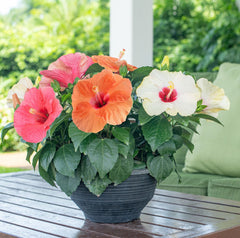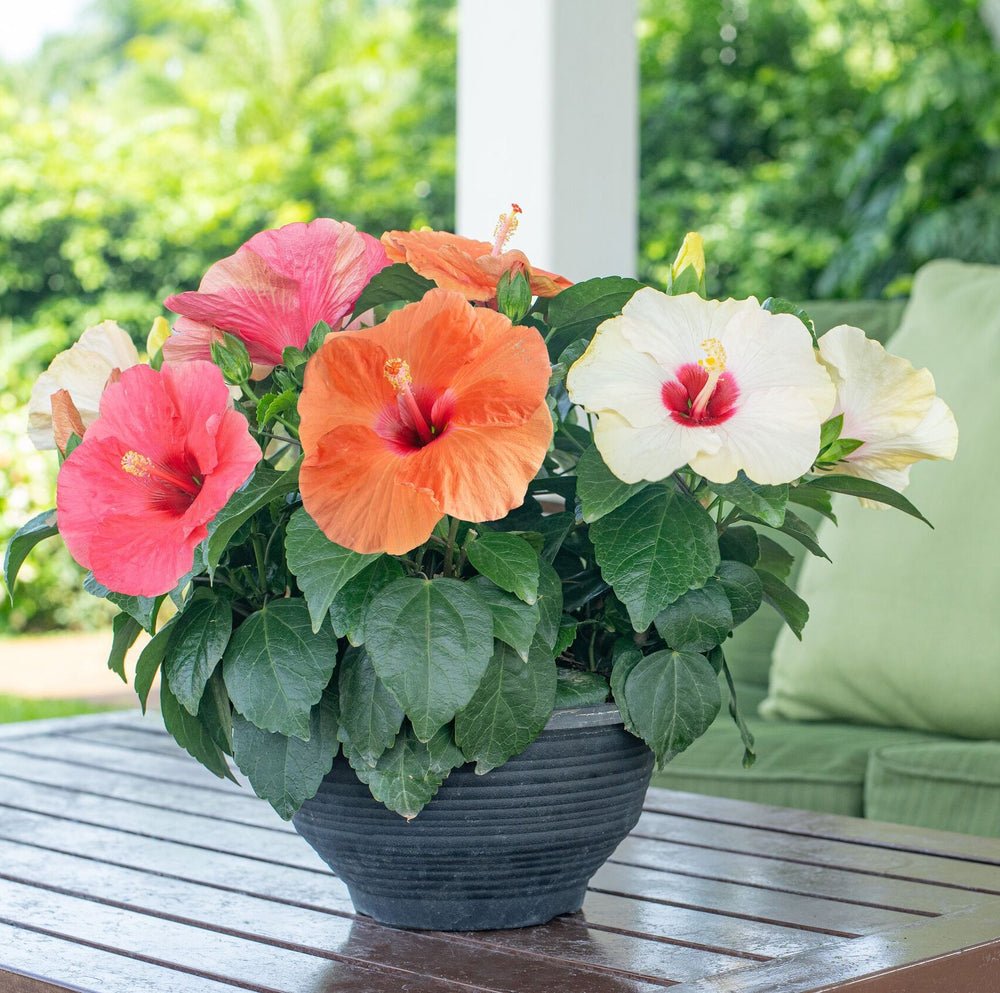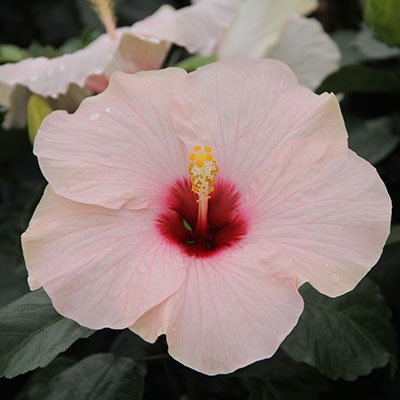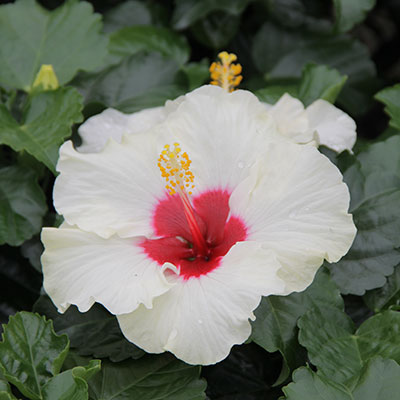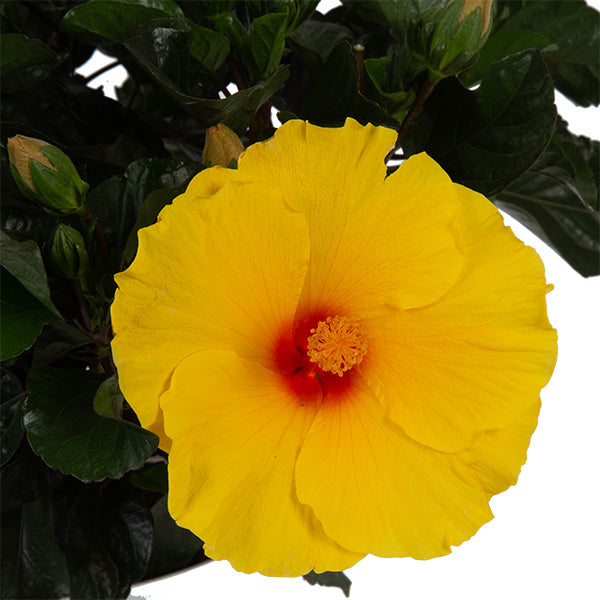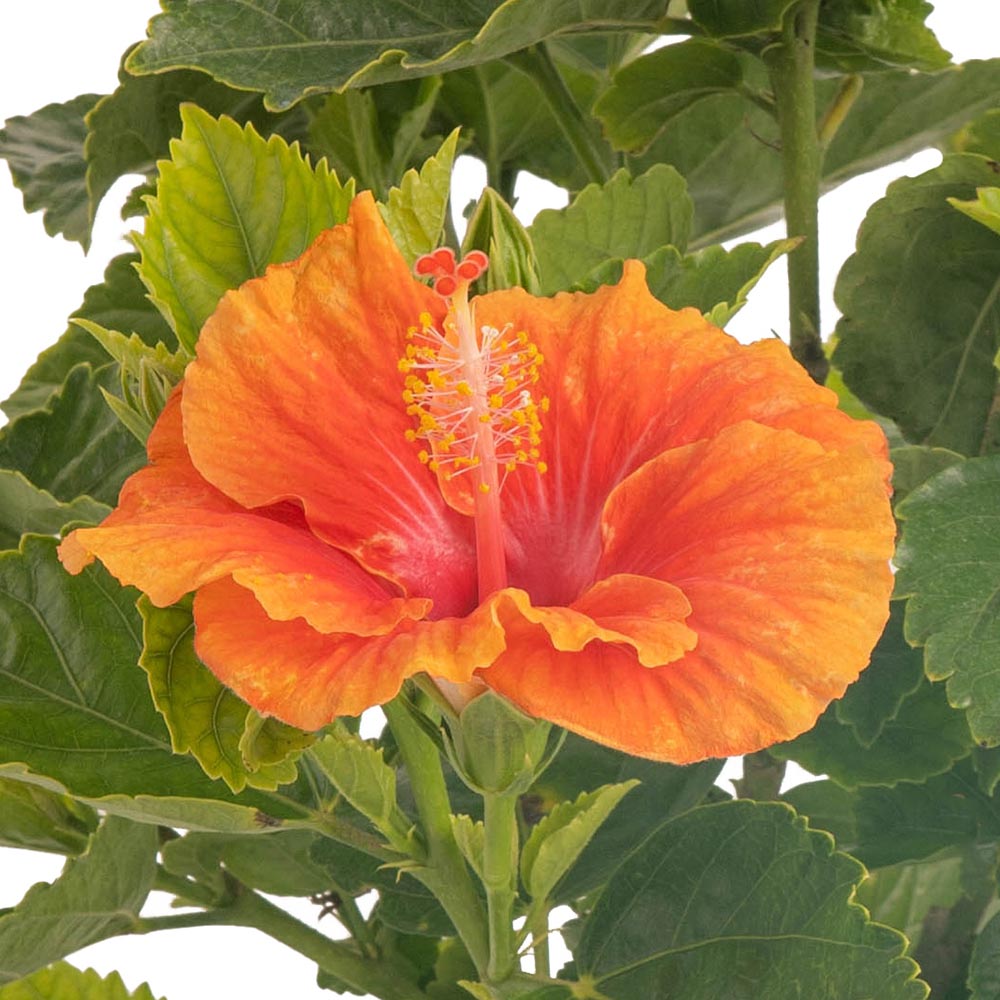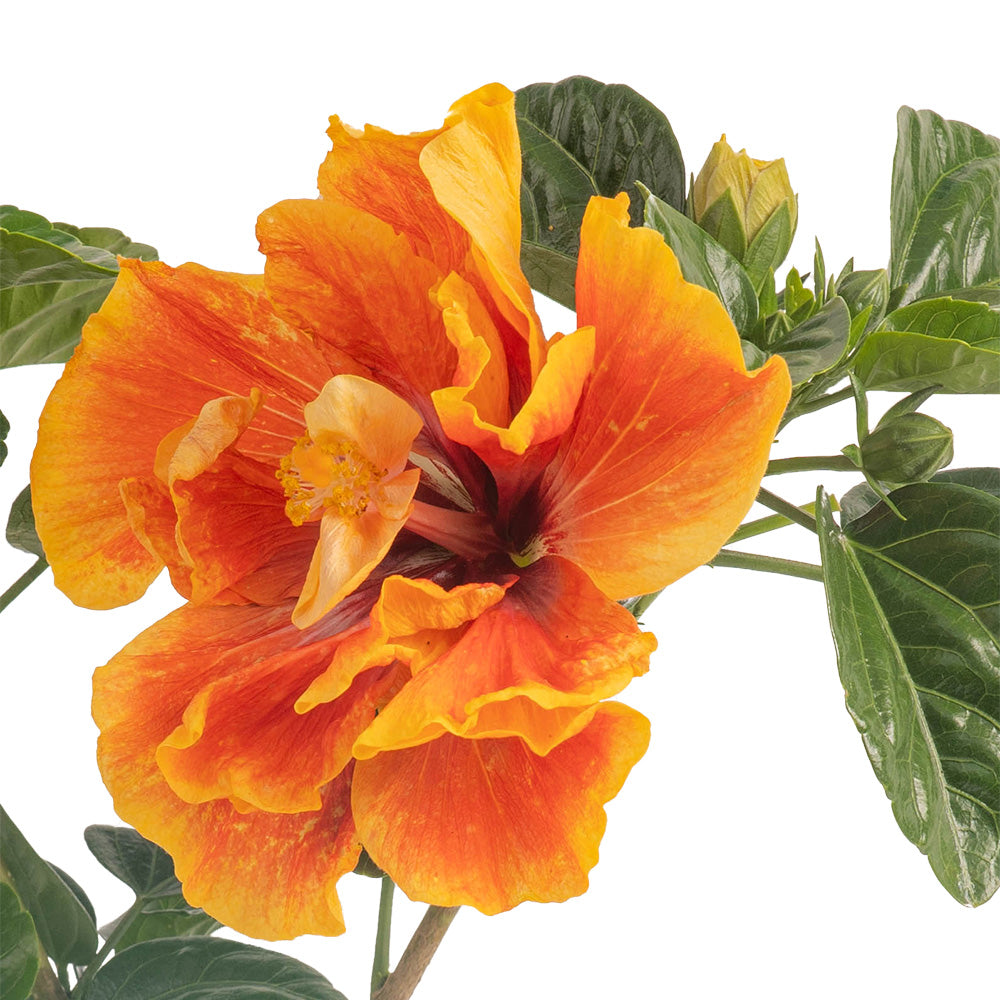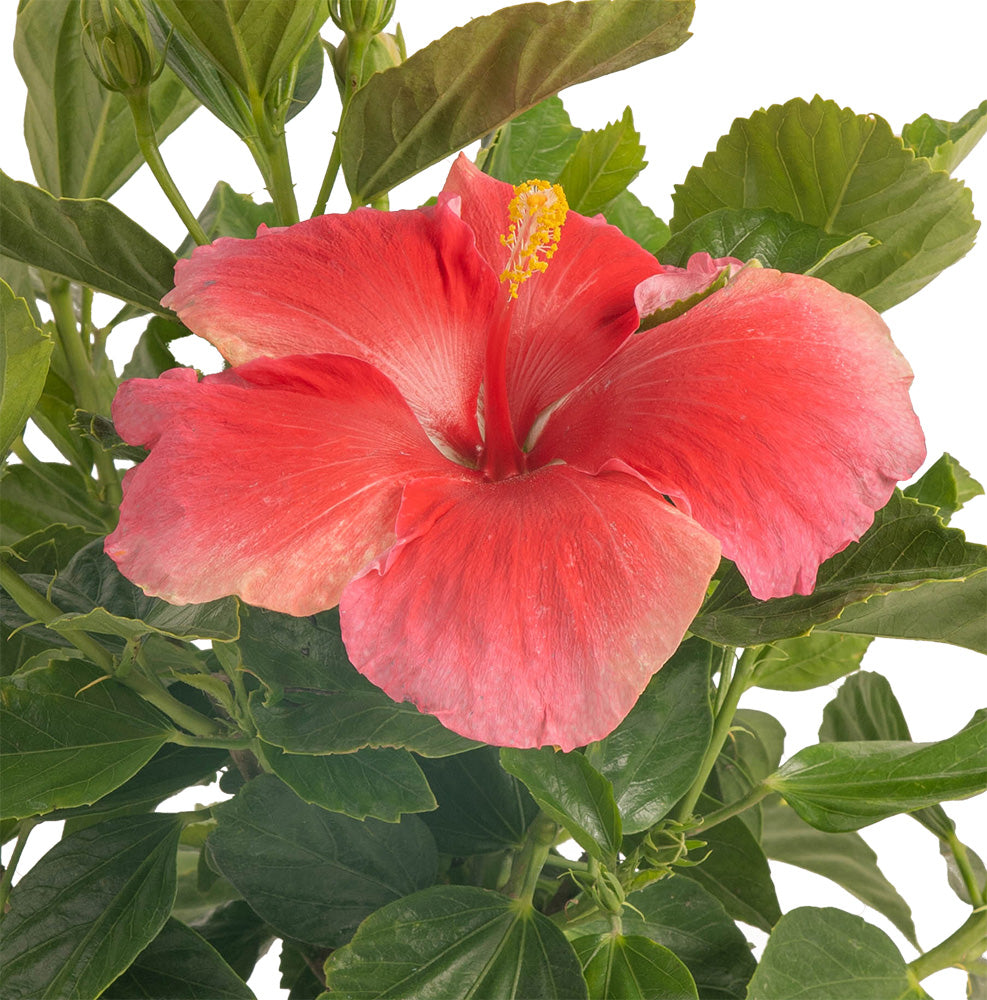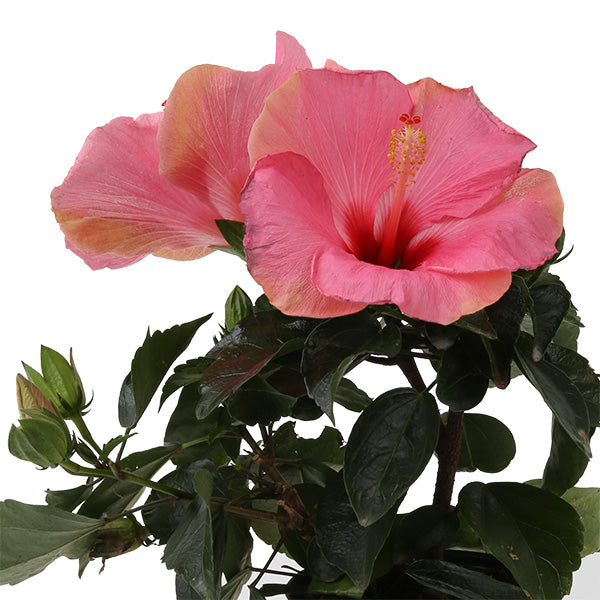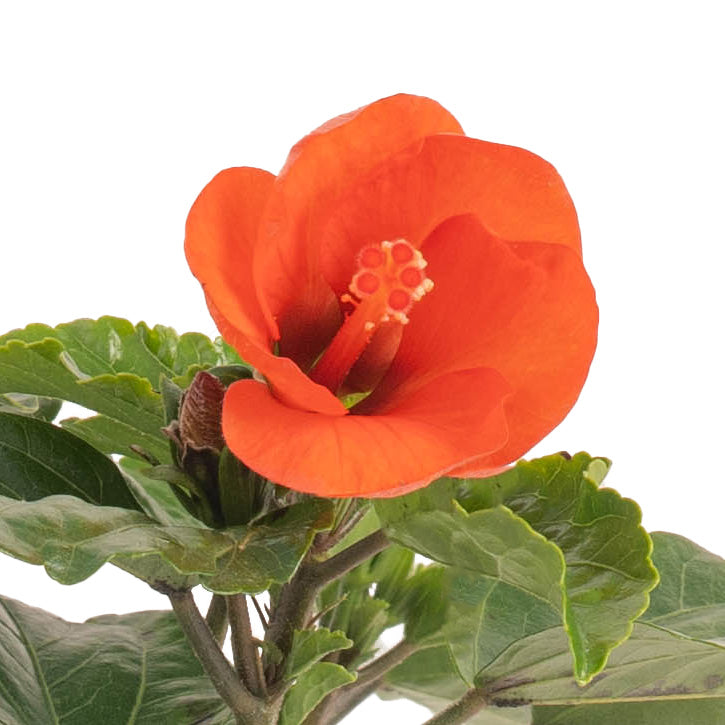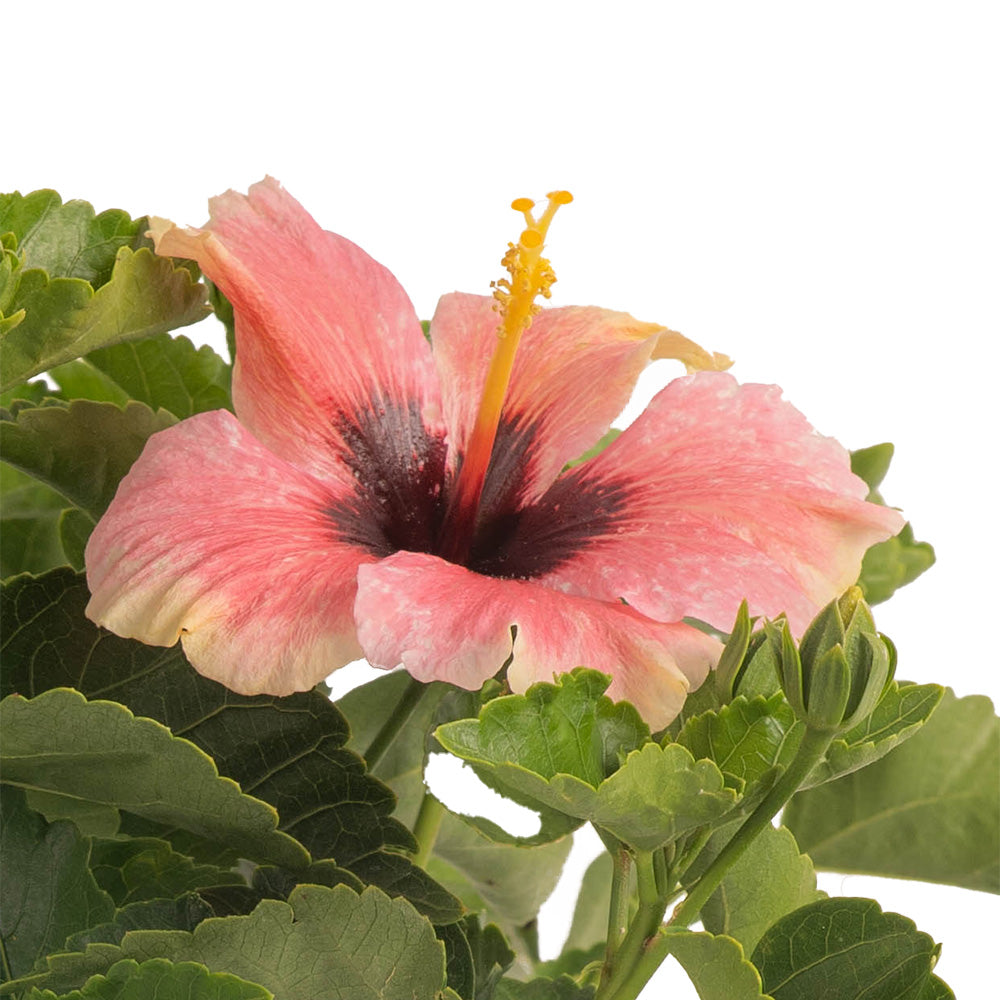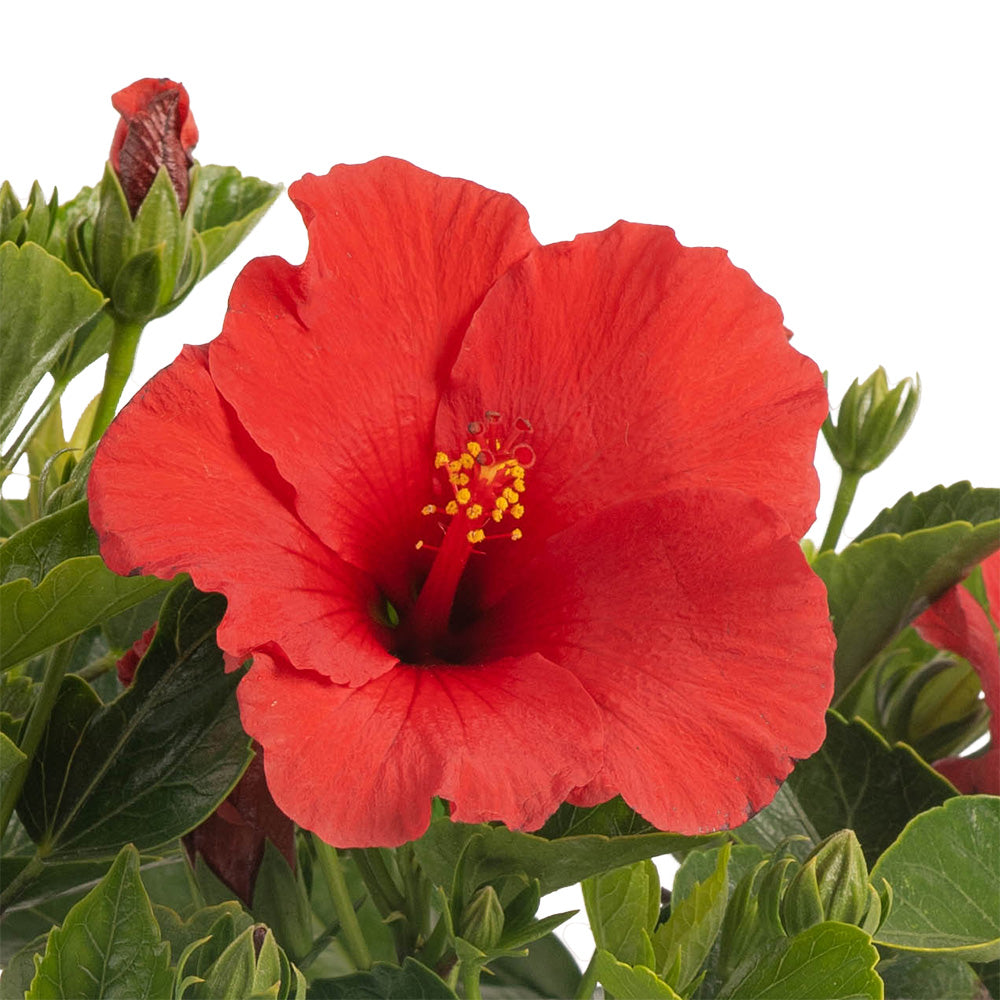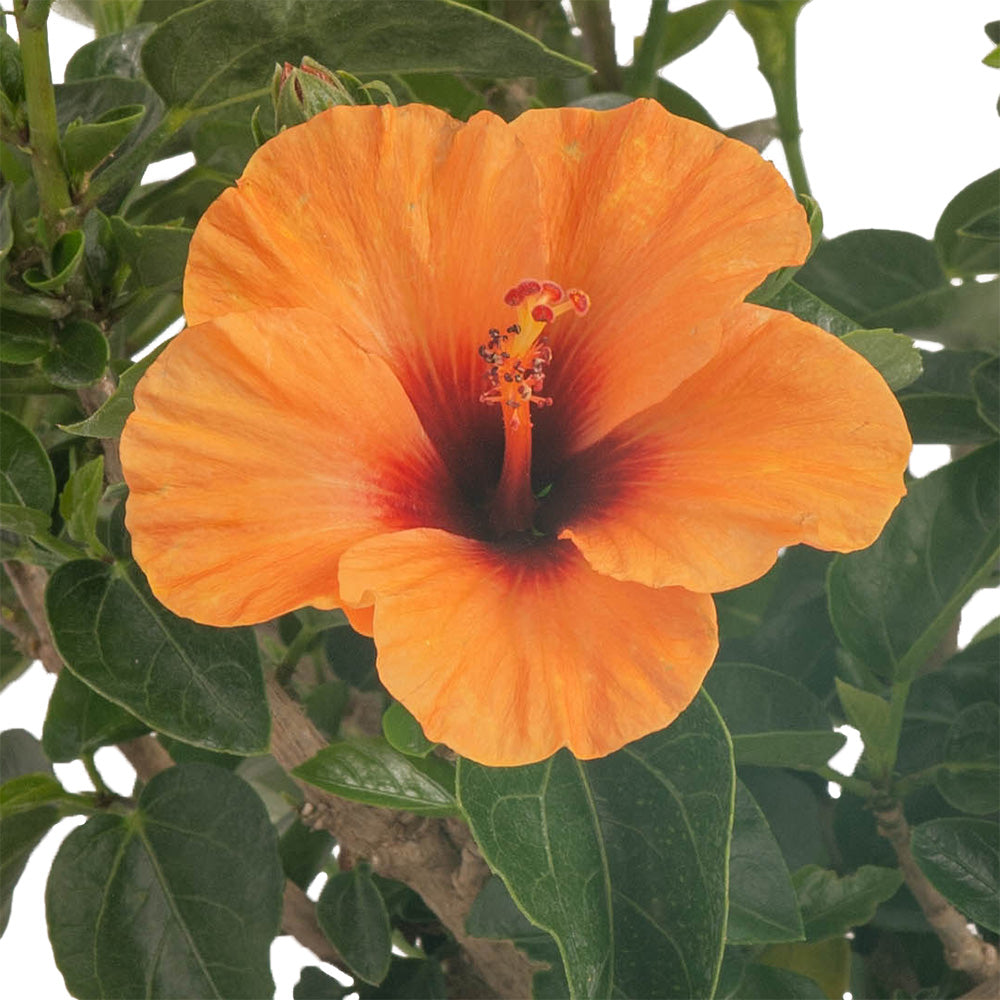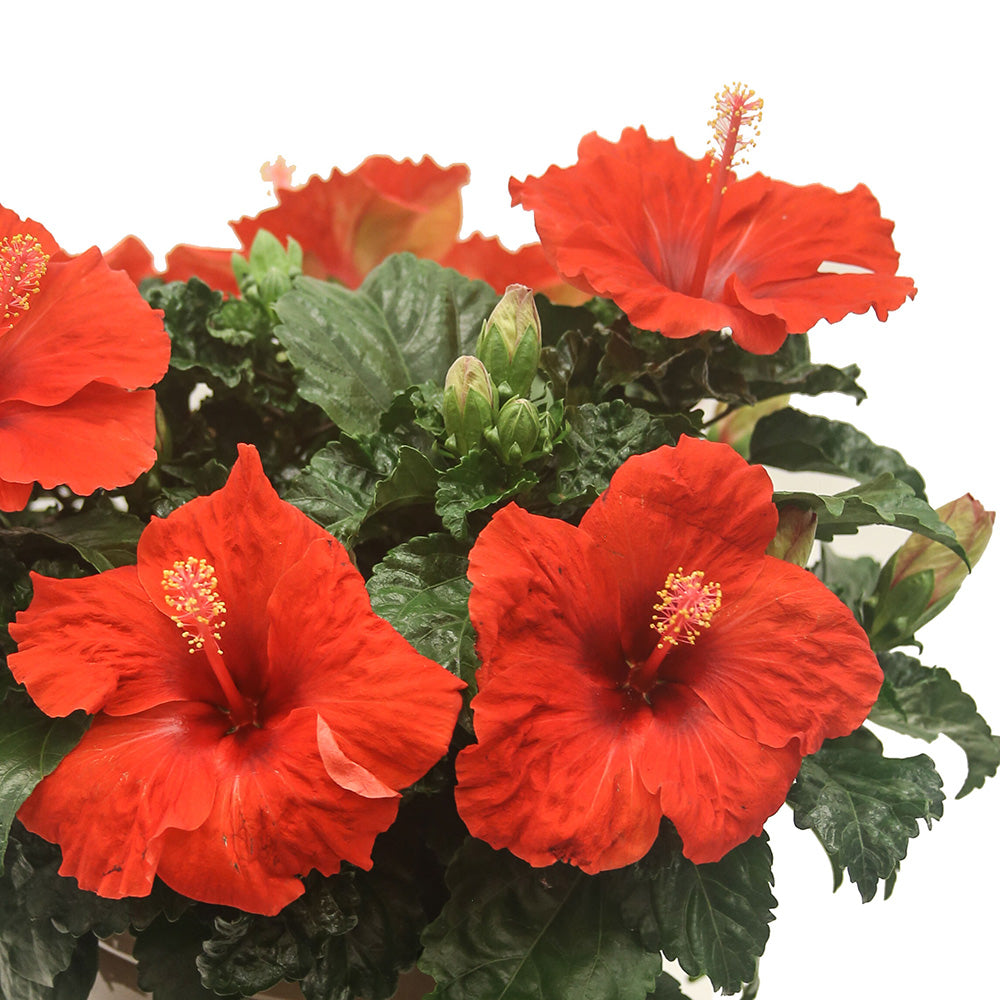Hibiscus, Tropical (Hibiscus rosa-sinensis)
Hibiscus, Tropical Plant Features
Few plants offer the tropical touch of tropical hibiscus. These sun-loving plants feature bold, plate-shaped flowers in a dazzling array of colors. You’ll most commonly find these flowering plants blooming in shades of red, pink, yellow, and orange, but there are also purple, lavender-blue, white, and bicolor varieties available. Some also have variegated foliage that adds appeal.
Tropical hibiscus are summer-blooming plants that grow well in containers or in the landscape. Potted hibiscus are bold flowering plants that add dramatic décor to decks, patios, and other spaces. Use them as focal points to accent your outdoor rooms, or group a number of these sun-loving plants together to form a hedge or privacy wall.
Hibiscus Questions?
Just drop us an email. Our tropical hibiscus experts are happy to help.
Hibiscus, Tropical Growing Instructions
Tropical hibiscus are sun-loving, flowering plants that grow best with 6 to 8 hours of direct light each day to bloom the most. They can grow in part shade, but they tend to bloom less.Hibiscus appreciate plenty of water, especially when you grow them in in container gardens. During the hottest part of the season, these summer-blooming shrubs may need watering every day (especially if their roots are cramped in a small pot). It's common for hibiscus plants to drop their flower buds if they dry out too much in summer.
Fertilize hibiscus monthly with a general-purpose fertilizer, following the directions on the product packaging, to ensure they produce the most blooms possible. You don't need to use special bloom-boosting fertilizers; regular, general-purpose products work just fine. Dwarf hibiscus grow 2-4 feet tall; standard varieties typically grow up to 5 feet tall.
Hibiscus typically don't need much pruning if you grow them in containers. But, if you do wish to prune your hibiscus, you can do so at any time to encourage a bushier, fuller plant.
Tropical hibiscus is not recommended for human or animal consumption.
-
Water
Medium water needs
-
Light
Indoors: High light
Outside: Sun
-
Colors
Orange
Pink
Purple
Red
Variegated
White
Yellow
-
Special Features
Attracts butterflies
Deer/rabbit resistant
Super-easy to grow
Complement your Hibiscus, Tropical
CrotonCroton’s boldly variegated leaves are an ideal accent to the bold blooms of hibiscus.
Mandevilla
These two sun-loving plants are a match made in heaven; both hibiscus and mandevilla offer nonstop summertime blooms in rich colors.
Curcuma
Beautiful curucuma is a flowering plant that adds an elegant touch to the bold blooms of tropical hibiscus.
Q&A
Can I grow tropical hibiscus indoors as a houseplant?Because tropical hibiscus do best outdoors in full sun, they don't usually make for good long-term houseplants unless you have a sunroom or conservatory with lots of light. That said, if you live in a cold-winter climate, you can bring your hibiscus indoors before frost and treat it like a houseplant until all danger of frost has passed in spring.
I have a tropical hibiscus and the buds are dropping before they open. What's wrong?
It's fairly common to see hibiscus drop their flower buds in response to stress. One of the most common types of stress we see is inconsistent watering -- when the plant dries out, then stays wet for a while, and is allowed to dry out again. Keeping a more regular level of soil moisture can help.
If you've just purchased your hibiscus, it may drop buds as it adapts from the change in conditions from your local garden center to your home. In this case, as soon as the plant gets settled -- usually in a week or two -- it should stop the bud drop.
If your plants are regularly overwatered or are fertilized too much, the damage to the roots can also cause them to drop their buds. Temperature can also play a role -- if it's excessively warm or cold, the weather can stress the plants enough that they drop their buds.
Also watch for pests. Some insects, including thrips, can cause hibiscus bud drop. If you see tiny insects in and around the buds before they drop, you may need to treat your plant with insecticidal soap, horticultural oil, neem oil, or an insecticide.
Will my beautiful tropical hibiscus survive the winter if I plant it outdoors in my yard?
Great question! It depends on where you live. Because tropical hibiscus don't tolerate frosty or freezing temperatures, to keep your plant alive over the winter, you'll need to bring your hibiscus indoors if your area experiences more than just a couple of light frosts. The good news is that tropical hibiscus is fairly easy to care for as a houseplant if you have a bright spot and water it regularly!
Where can I buy a tropical hibiscus for my yard?
Look for these plants at your local garden center, home improvement center, or mass merchandiser. Or, check out our list of Costa Farms' retail partners. If you still can't find a retailer, send us an email!
